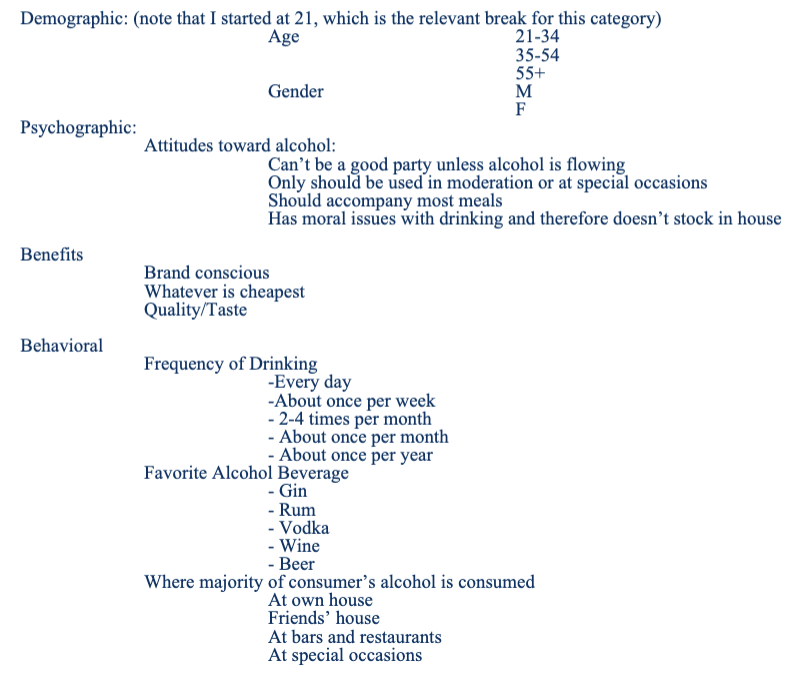4/10 Segmentation and Positioning: Personas for Master Group Descriptions
Focus on the “positioning” aspect of strategy in the marketing framework
Types of B2C (business-to-consumer) segmentation
Geographics (country, city, density, language, climate, area, population)
Demographics (age, gender, income, education, social status, family, life stage, occupation)
Psychographics (lifestyle, AIO (activity, interest, opinion), concerns, personality, values, attitudes)
Behavioral (purchase, usage, intent, occasion, buyer stage, user status, life cycle stage, engagement)
5th category - benefits sought (this can fall under behavioral though)
Create master groups based on the segment breaks from each of these categories
Don’t start with the product or brand- segmentation is for the entire category (your competitors too!)- it’s the whole pizza
Behavior > User Status
Aware/Non-aware
Aware > Trier/Non-Trier
Trier > Repeater/Non-Repeater
Repeater > Loyalty/Lapsed User
Behavior could also be how the product is used.. ex. wine at home vs. at a bar vs. as a gift
Segmentation “breaks” for alcohol category

Personas
Taking it a step further and painting a more specific picture of a “representative” of a master group
Lifestyle, personal background (age, marital status, location, etc.), challenges/pain points/frustrations (financial, etc.), occupation, goals, motivations, where do they go for information
Other categories may include business background (but this can fall under occupation as well)
Positioning is the art of sacrifice
Being all things to all people means you will be nothing special to everyone
ex. Sauce lines - “Chicken Tonight” vs. “Dinner Tonight”
Not only is chicken more specific, but 65% of American meals incorporate chicken
Product positioning
Target
Frame of Reference - who is the brand competing against
Point of Difference - believable, relevant, insulated, ownable/unique
can be either emotional or rational
should be in superlative form (healthiest is better than healthy)
Reason to Believe - functional or emotional, may be backed by strong brand image
“To target (segment group(s) name) who are (master group), this product is the (frame of reference) that (point of difference) because (reason to believe)”
ex. Campbell “Soup at Hand”
“To target working people/on the go/aged 20-35 who are looking for a quick/value priced meal, this product is the best storebought option that is unique because of its heat-and-sip feature
3 C’s tests of Positioning
Consumer analysis - relevant, resonant, realistic
Competitive analysis - distinctive, defendable, durable
Company analysis - feasible, favorable, faithful
Perceptual maps - 4 quadrant graph, x and y axises are attribute “dimension” scales of a product/service
Companies are indicated by dots and master groups are indicated by circular areas